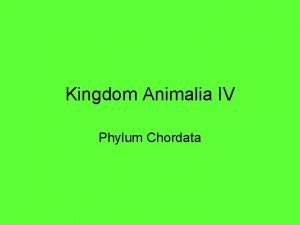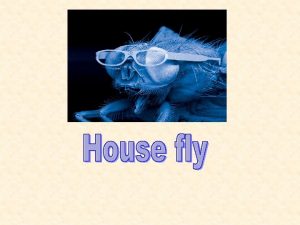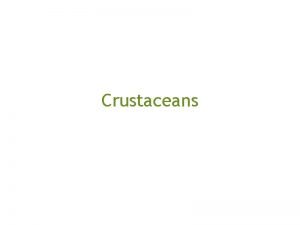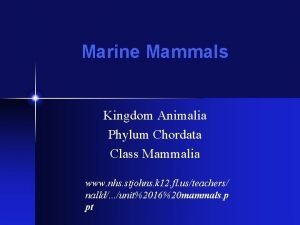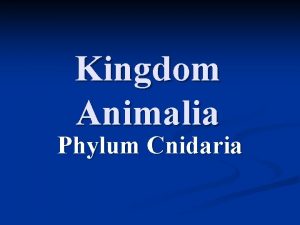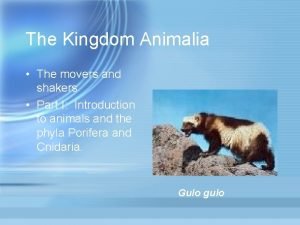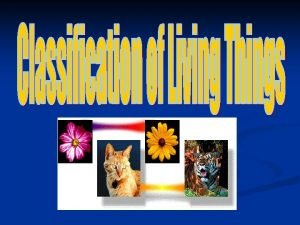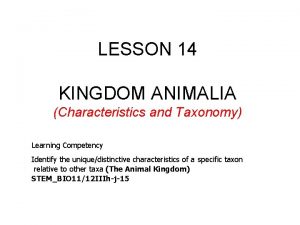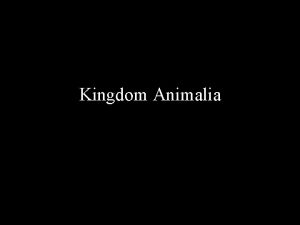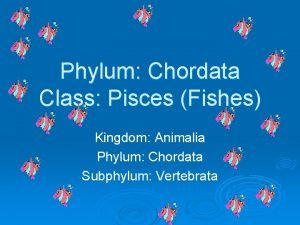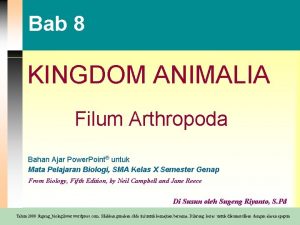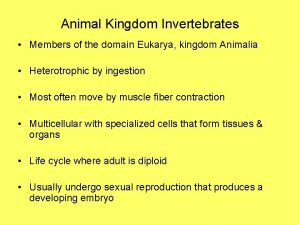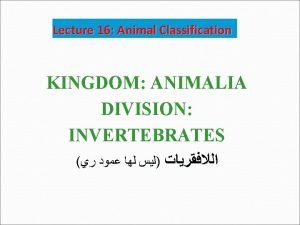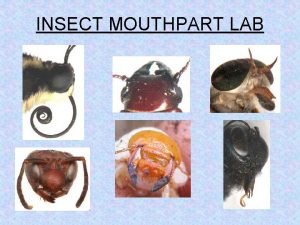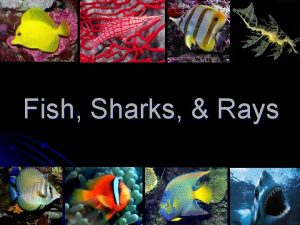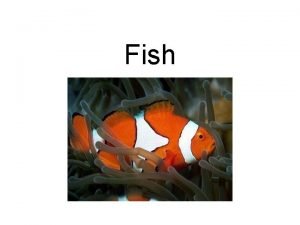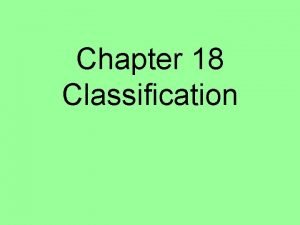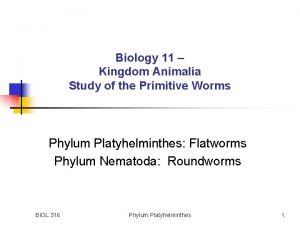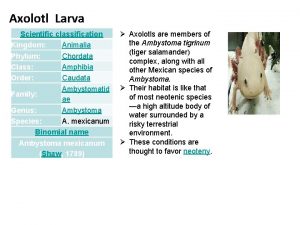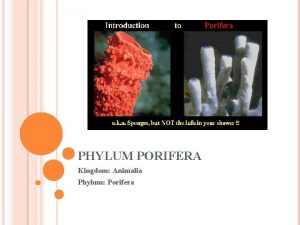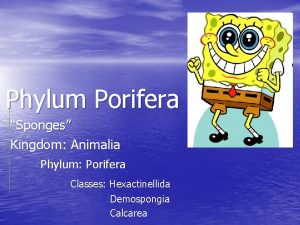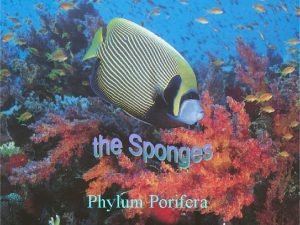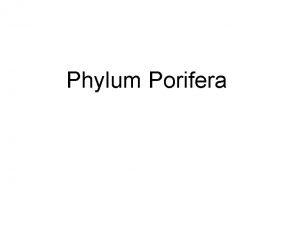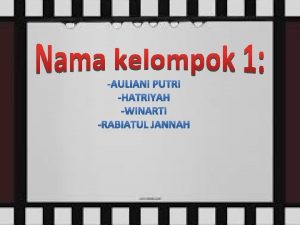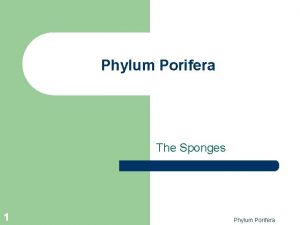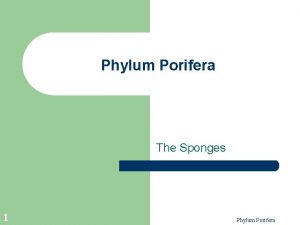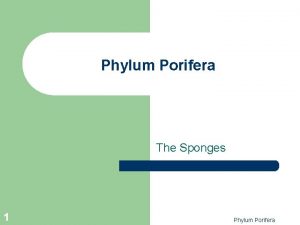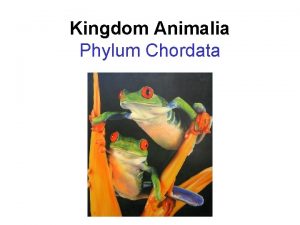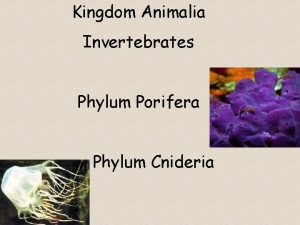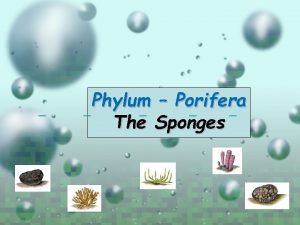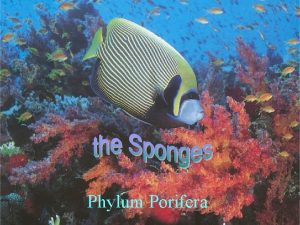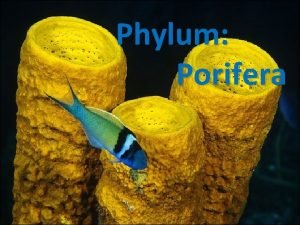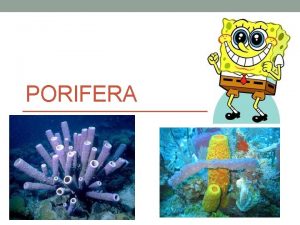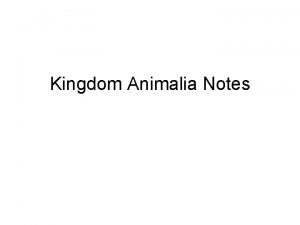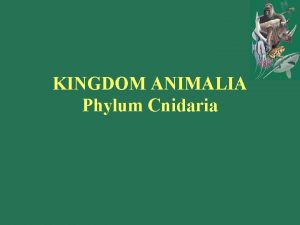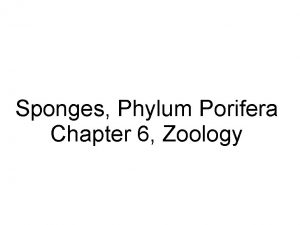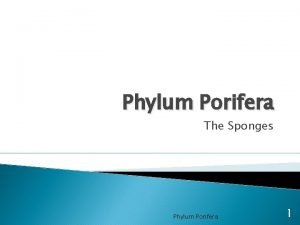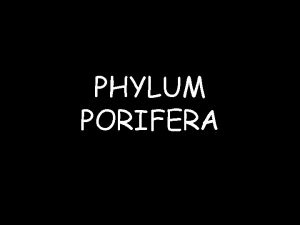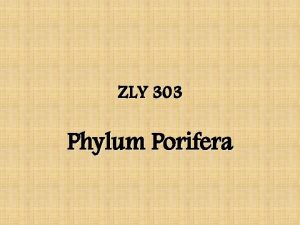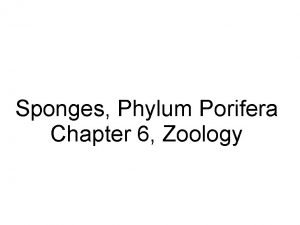Phylum Porifera I General Information Kingdom Animalia Phylum































- Slides: 31

Phylum Porifera

I. General Information • Kingdom : Animalia • Phylum : Porifera • Porifera = “pore bearer” Yellow barrel sponge Pink lumpy sponge

I. General Information Size range – 1 cm to 2 meters in diameter Giant Barrel sponges

II. Body Structure A. Ostia – pores – many, water IN B. Oscula – large opening(s), one or few, water OUT osculum

II. Body Structure C. Choanocytes – collar cells; have flagella D. Amoebocytes – transport food to layer of cells not on the surface

II. Body Structure E. Spicules – “skeleton” hard splinterlike; made of calcium carbonate (Ca. CO 3) or silica (Si) F. Spongin – flexible protein

III. Level of organization A. Cellular B. Eukaryotic C. No tissues Japanese Deep Sea Sponge

IV. Symmetry A. Some asymetrical B. Some radial

V. Habitat Aquatic A. Marine and B. Fresh-water Purple Rope sponge Fresh-water Sponge

VI. Feeding • • • Heterotrophic Filter feeders Food trapped by choanocytes Intracellular digestion (within the cell) No digestive tract

VI. Feeding – – Water & food goes in via ostia Choanocytes trap food in spongocoel Amoebocytes carry food to inner layer of cells Water out osculum

VII. Respiration - via diffusion

VIII. Internal transport • via diffusion

IX. Excretion Via DIFFUSION!!!!!

IX. Response • NONE ! • No Nervous System • No cephalization Pipe organ sponge

X. Locomotion = movementor motility Larvae Freeswimming, use cilia Adults Sessile (do NOT move)

XI. Reproduction 1. Asexual a. budding b. gemmules formed in stress conditions

XI. Reproduction • • 2. Sexual a. Most monoecious = both sexes in same organism (hermaphrodites) egg & sperm produced cross fertilization egg + sperm => free-swimming larvae

XI. Reproduction 2. Sexual b. Some dioecious • Separate sexes • Egg OR sperm produced Sponge releasing sperm

XII. Ecological Roles A. Habitat for other aquatic animals B. Food for some

XII. Ecological Roles C. Home use: bathing, cleaning, home improvement, other

XII. Ecological Roles D. Medical research Sponges do not get cancer Why not? Maybe we can use what keeps them from getting cancer to treat humans………. .

Azure Vase Sponge

Giant Barrel Sponge

White Cryptic Sponge

Elephant Ear Sponge

Stove pipe sponge

Yellow Vase Sponges

Yellow Barrel Sponge

Red Branch Sponge

How deep would the oceans be if there were no sponges?
 Kingdom animalia phylum chordata
Kingdom animalia phylum chordata Family leporidae kingdom
Family leporidae kingdom Diptera phylum
Diptera phylum Kingdom animalia phylum arthropoda
Kingdom animalia phylum arthropoda 2 forms of cnidarians
2 forms of cnidarians Seal phylum
Seal phylum Cnidaria characteristics
Cnidaria characteristics Old kingdom middle kingdom new kingdom
Old kingdom middle kingdom new kingdom Old kingdom middle kingdom new kingdom
Old kingdom middle kingdom new kingdom Old kingdom middle kingdom new kingdom
Old kingdom middle kingdom new kingdom Capital of egypt during the old kingdom
Capital of egypt during the old kingdom Nine phyla of kingdom animalia
Nine phyla of kingdom animalia Kingdom animalia cell structure
Kingdom animalia cell structure Characteristics of animalia kingdom
Characteristics of animalia kingdom Cladogram of 6 kingdoms
Cladogram of 6 kingdoms Kingdoms cladogram
Kingdoms cladogram Class pisces fishes
Class pisces fishes Protista, fungi, plantae, animalia *
Protista, fungi, plantae, animalia * Characteristics of animalia
Characteristics of animalia Arthropoda
Arthropoda Which are all members of the domain eukarya
Which are all members of the domain eukarya Kingdom animalia eukaryotic or prokaryotic
Kingdom animalia eukaryotic or prokaryotic Animalia division
Animalia division Animalia domain
Animalia domain Insect order classification
Insect order classification Animalia kingdom
Animalia kingdom Sharks kingdom
Sharks kingdom Kingdom classification of fish
Kingdom classification of fish Kingdom animalia contains 350 000 species of what
Kingdom animalia contains 350 000 species of what Characteristics of platyhelminthes
Characteristics of platyhelminthes Kingdom of axolotl
Kingdom of axolotl Animal kingdom cladogram
Animal kingdom cladogram
